Cascais-Portugal.com
The best independent guide to Cascais
Cascais-Portugal.com
The best independent guide to Cascais
Cascais; the best sights, attractions and things to see and do in 2026
Cascais is the premier resort town of the Lisbon region, combining a delightful historic centre with a beautiful coastline of sandy beaches and easy access to the dramatic scenery of the Serra de Sintra.
Located just 30 minutes by train from central Lisbon, Cascais offers far more than a typical beach resort. At its heart lies a charming town packed with shops, restaurants, bars and grand 19th-century villas, while the surrounding coastline ranges from sheltered family beaches to wild Atlantic surf spots.
This exciting and buzzing holiday destination boasts such a variety of attractions that it ranks as one of the best day trips from Lisbon, yet offers enough to fill an entire holiday. The town serves as an ideal base for exploring the wider region, from the fairy-tale palaces of Sintra to the dramatic cliffs of Cabo da Roca.
This article details the best sights and activities within Cascais itself, plus the top attractions of the surrounding region for those planning a longer stay in this wonderful town.
The best sights and attractions of Cascais - an overview
Below you'll find two lists: the essential sights within Cascais itself (perfect for a day trip from Lisbon), and the top attractions in the wider region for those staying longer. Full details and practical information for each attraction are provided in the later section of this article.
Top sights of Cascais for a day trip
The Condes de Castro Museum - This grand yellow neo-gothic villa built by an Irish tobacco millionaire in 1902 now displays his personal art collection, including a precious 16th-century manuscript featuring one of Lisbon's oldest images.
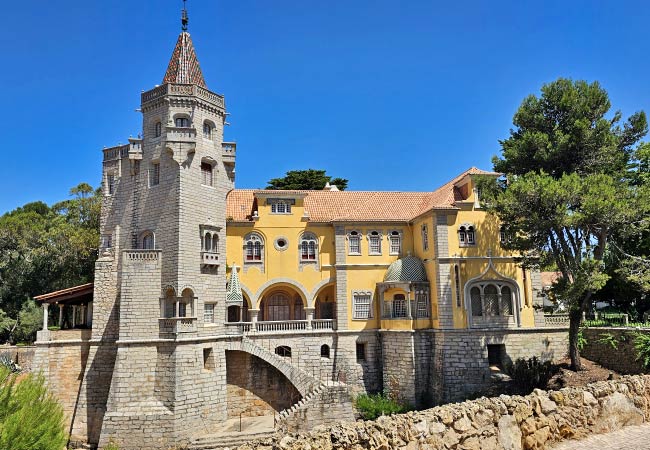
The Boca do Inferno - A dramatic collapsed sea cave where Atlantic waves crash through the remaining rocky arch, creating spectacular sprays during winter storms at this aptly named "Hell's Mouth" formation.
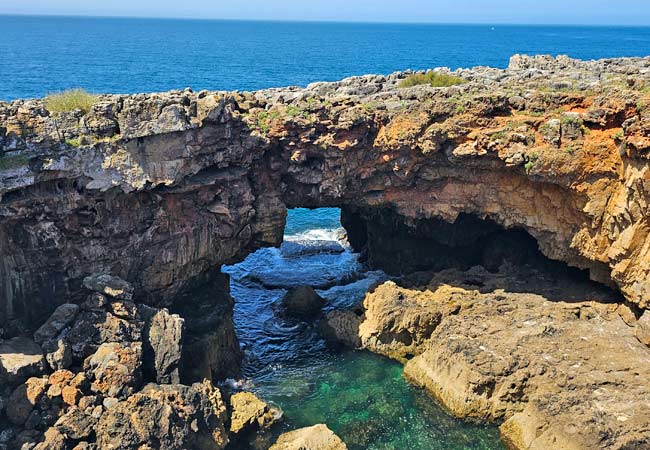
Praia da Rainha - This tiny but perfectly formed beach in central Cascais earned its regal name when Queen Amélia claimed it as her private bathing spot in 1889.
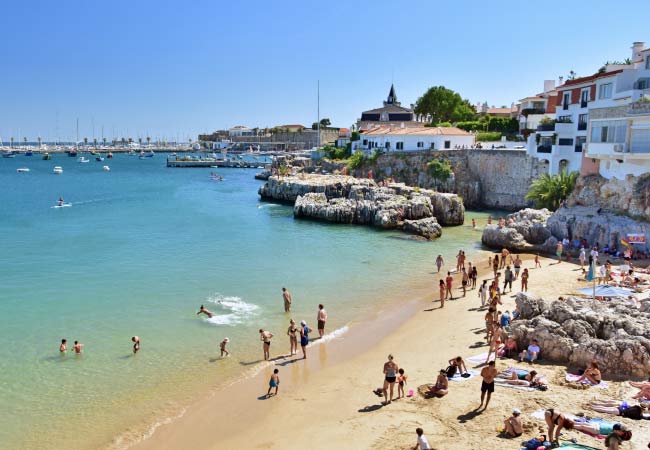
The Cascais to Estoril Promenade - A scenic 2.3km coastal walkway passing charming beaches and grand 19th-century villas, offering the region's best short walk with convenient train connections.

Casa de Santa María and Lighthouse - Jorge O'Neil's 1910 wedding gift to his daughter showcases traditional Portuguese architecture alongside Cascais' distinctive blue-and-white tiled lighthouse with its unusual quadrangular tower.
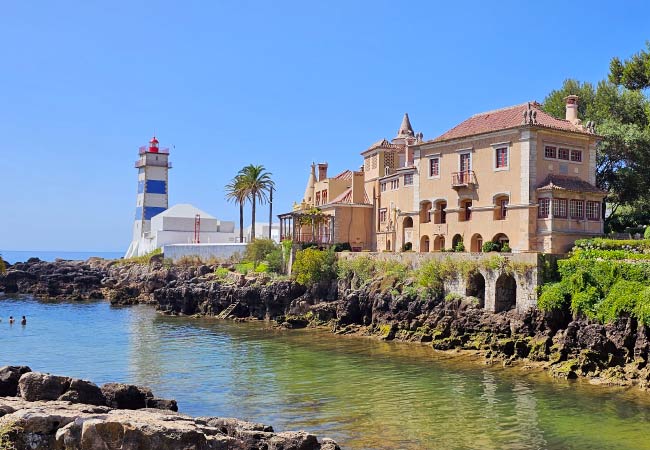
Casa das Histórias Paula Rego - This striking museum with twin towers inspired by Sintra's National Palace houses the finest works of Portugal's most celebrated modern artist (1935-2022).
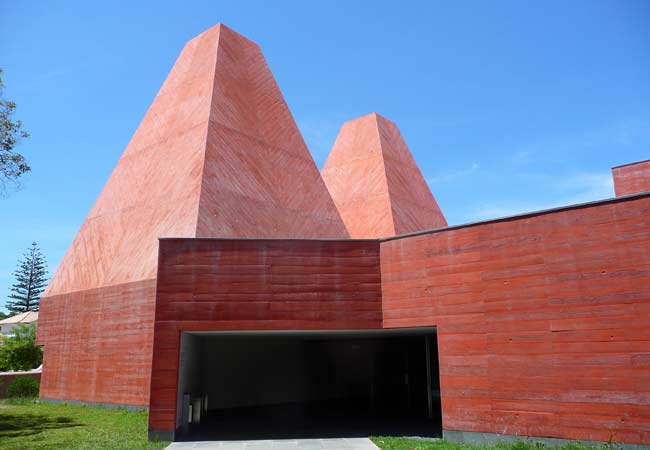
Cidadela de Cascais - A formidable 16th-century fortress that once defended the Tejo Estuary now serves as a stylish hotel and upscale artisan centre.

Parque Marechal Carmona - Tranquil gardens surrounding the Condes de Castro mansion feature duck ponds, peacocks, and a charming petting zoo perfect for family visits.
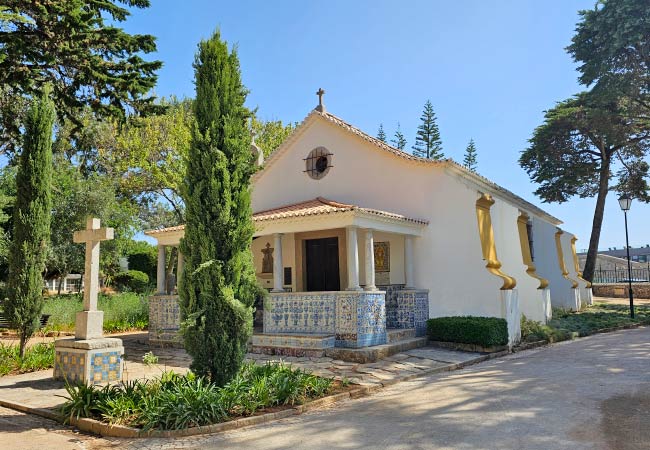
Cascais Marina - The modern yacht harbour sits alongside the traditional fishing port, creating an appealing contrast between luxury vessels and colourful working boats.
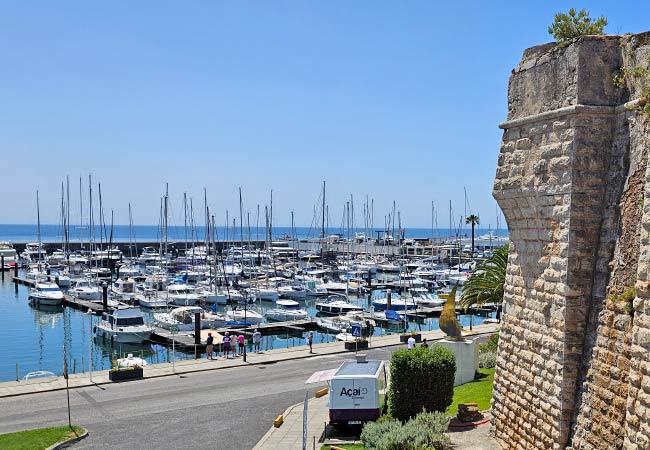
Museu do Mar Rei Dom Carlos I - King Carlos' former seaside residence now houses an engaging museum celebrating Cascais' fishing heritage through model boats and maritime artefacts.
Top 5 sights for a holiday to Cascais
Day trip to Sintra - This UNESCO World Heritage town enchants visitors with fairy-tale palaces emerging from misty forests, including the colourful Pena Palace and the mysterious Quinta da Regaleira with its mystical initiation wells – Guide to Sintra.
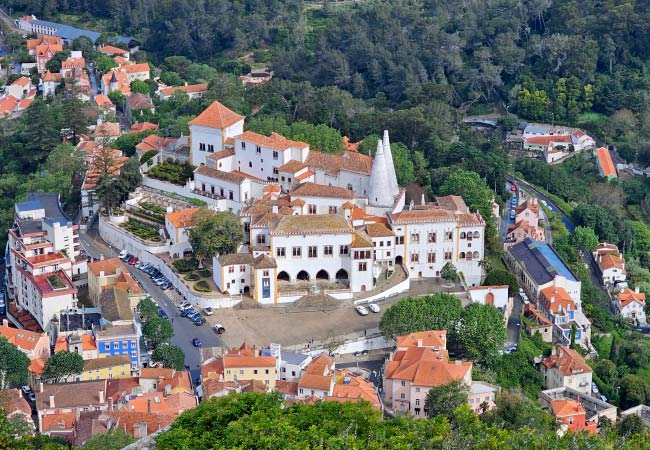
Day trip to Lisbon - Portugal's vibrant capital lies just 25 minutes away by direct train, offering everything from vintage tram rides through medieval neighbourhoods to cutting-edge restaurants and world-class museums – Day trip to Lisbon.
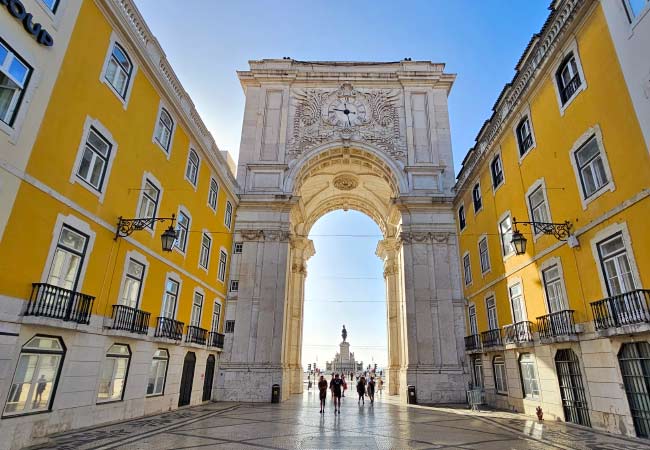
The Cabo da Roca cliffs - Stand at mainland Europe's westernmost point where 140-metre cliffs plunge dramatically into the Atlantic, a wild and windswept headland that medieval sailors believed marked the edge of the world - Cabo da Roca.

Praia de Carcavelos (beach) - This vast 1.5km stretch of golden sand between Cascais and Lisbon rarely feels crowded even in peak summer, attracting families to its calm waters and surfers to its consistent waves.
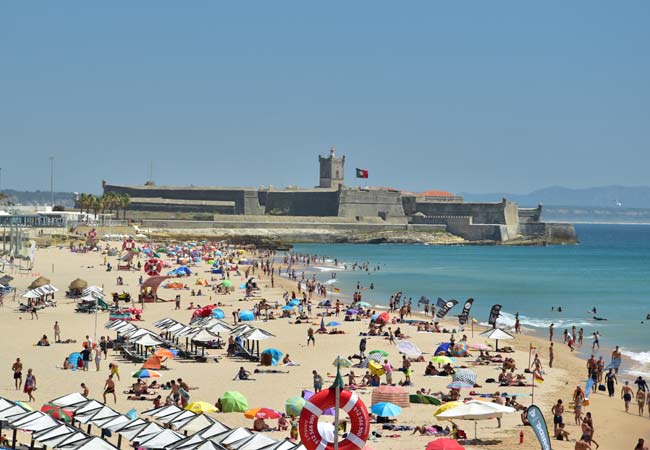
Surfing on the Praia do Guincho - This wild Atlantic beach 9km west presents powerful waves and constant winds that create world-class conditions for surfing, windsurfing and kitesurfing against a backdrop of dramatic dunes and the Serra de Sintra hills.
Below is an interactive map which shows the best sights of Cascais (green) and of the surrounding area (blue). Note: Zoom in or out to see the location of all of the points
Sights of Cascais (green): 1) Condes de Castro 2) Boca do Inferno cliffs 3) Praia da Rainha 4) Cascais to Estoril promenade 5) Casa de Santa María and lighthouse 6) Casa das Histórias Paula Rego 7) Fortress da Luz de Cascais 8) Parque Marechal Carmona 9) Cascais Marina 10) Museu do Mar Rei Dom Carlos I
Sights of Cascais region (blue): 1) Sintra 2) Lisbon 3) Cabo da Roca 4) Praia de Carcavelos 5) Praia do Guincho 6) The N247 7) Guincho beach 8) Oeiras coastal promenade 9) Oitavos Dunes golf course 10) Casino Estoril
The following section while detail the highlights of Cascais in greater depth
Related articles: Day trip to Cascais - Cascais beaches - Sintra guide – Lisbon guide
Detailed Descriptions of Cascais's Sights & Attractions
The Museu Condes de Castro Guimarães
This striking canary-yellow villa stands as Cascais' most whimsical architectural gem, a neo-gothic fantasy commissioned in 1902 by Irish tobacco millionaire Jorge O'Neil. Designed by Luigi Manini (who also created Sintra's Quinta da Regaleira), the mansion ingeniously incorporates a 17th-century stone tower into its romantic design, connected by a covered bridge that has become an iconic Cascais landmark.
Inside, O'Neil's eclectic tastes come alive through ornate rooms decorated with 17th-century azulejo tiles, carved wooden ceilings, and Indo-Portuguese furniture. The library houses an impressive 25,000 volumes, while the museum's crown jewel is the Crónica de Dom Afonso Henriques, a precious 1505 illuminated manuscript containing one of the earliest known illustrations of Lisbon, a priceless glimpse of the city before the devastating 1755 earthquake.
In a remarkable gesture, O'Neil donated his entire estate to Cascais in 1924 with the condition that it become a public museum. Today, visitors can explore this time capsule of aristocratic life, climb the tower for sea views, and stroll through the adjoining Parque Marechal Carmona with its resident peacocks. The museum perfectly captures the era when Cascais transformed from fishing village to playground of the wealthy.

The Boca do Inferno cliffs, Cascais
To the north of Cascais is a jagged coastline of highly-weathered cliffs that are battered by the ferocious Atlantic Ocean.
The Boca do Inferno is a unique coastal feature - a sea cave that has collapsed, leaving just an arch in the rocks that was once the entrance to the cave. During winter storms, huge waves crash through the opening and spray is expelled upwards - however, it will be significantly less dramatic on a calm summer's day!
The Boca do Inferno is a pleasant 20-minute walk from the marina, and will make an interesting addition to your day trip.
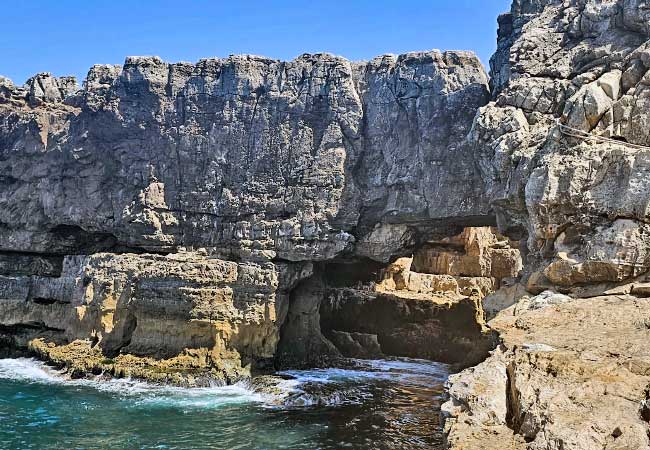
Seaward entrance to the Boca do Inferno as seen from the cliffside viewpoint.

Waves crashing through the Boca do Inferno on a blustery January day
The Praia da Rainha beach
This tiny beach lives up to its regal name (queen’s beach). In 1889, Queen Amélia of Orléans and Braganza claimed this perfectly formed cove as her private bathing spot while summering at the nearby Palácio da Cidadela. The sheltered beach, with its calm turquoise waters and golden sand framed by weathered cliffs, offered the privacy befitting a queen.
Today, despite its central location just steps from the historic centre via a steep stairway, Praia da Rainha retains an intimate, secluded feel. However, its small size and stunning beauty mean it will be crowded during the summer

The pretty Praia da Rainha, as chosen by a queen...
The Cascais to Estoril Promenade
The 2.3km coastal path linking Cascais to Estoril ranks as the region's most scenic short walk. Known locally as the Paredão ("big wall"), this flat, pedestrianised promenade offers a fascinating snapshot of Portuguese seaside life against a backdrop of golden beaches and Atlantic waves.
Starting from Cascais's central beaches, the path meanders past a succession of charming coves including Praia da Rata and Praia da Poça. Along the way, you'll discover the Piscina Oceânica Alberto Romano, a large seawater pool built into the rocks, and magnificent 19th-century villas of the "Portuguese Riviera". The route finishes at Estoril's glamorous Praia do Tamariz, overlooked by the famous casino that reportedly inspired Ian Fleming's Casino Royale.
Early mornings belong to joggers and dog walkers, while afternoons see families heading beachward and couples strolling hand-in-hand. With cafés and kiosks dotted throughout, it's impossible to go thirsty on this delightful coastal journey.
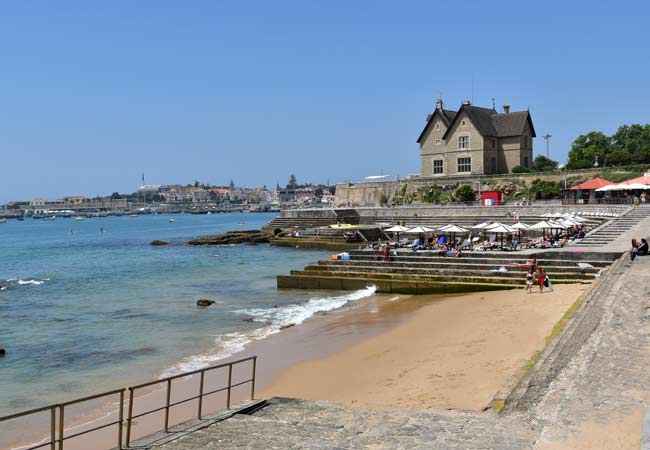
The Paredão de Cascais passes the Duques de Palmela palace and the Alberto Romano sea swimming pool
Cascais' holiday atmosphere
Cascais is a fun destination for a holiday, with a vibrant and buzzing atmosphere during the summer. The town is packed with friendly restaurants and lively bars, and there is always something happening in the evenings and at night. In the summer, Cascais attracts a mix of ages and nationalities and is a fantastic place to be based.
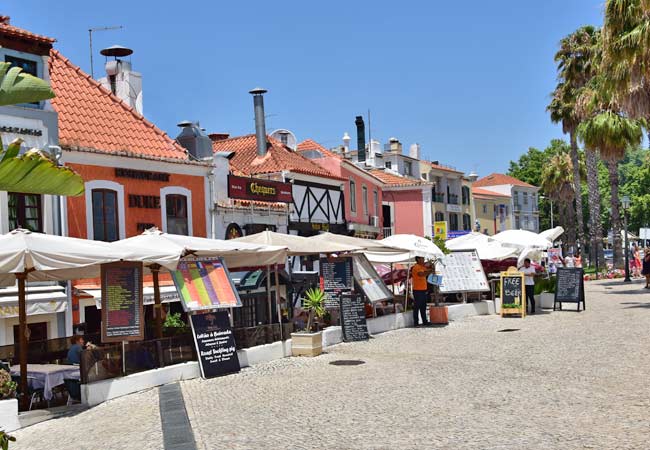
The many bars and restaurants along the Alameda Combatentes street
The Cabo da Roca
The Cabo da Roca is the most westerly point of mainland Europe, and is a barren, wind-swept landscape comprising of colossal cliffs and raging Atlantic waters. Visiting here you'll understand why medieval sailors believed these 140-metre-high cliffs marked the edge of the world.
A stone monument topped with a cross marks the spot, inscribed with poet Luís de Camões's perfect words: "Onde a terra se acaba e o mar começa" (Where the land ends and the sea begins). The red-and-white lighthouse, operational since 1772, continues guiding ships past this crucial European landmark.
The adventurous can tackle the challenging 45-minute hike down to Praia da Ursa. This steep and demanding trail rewards with arguably the region's most spectacular wild beach, dominated by colossal sea stacks including the namesake "Bear Rock."
Sunset here ranks among Portugal's most magical experiences, as the sun sinks directly into the infinite Atlantic horizon. The exposed clifftops remain windy even on warm days, so bring layers for comfort at Europe's dramatic full stop.

The powerful lighthouse at the Cabo da Roca

The Praia da Ursa beach is one of the most beautiful beaches of the Lisbon region
Praia da Duquesa and Praia da Conceição beaches
The beautiful Praia da Duquesa and Praia da Conceição are two linked beaches that form the largest sandy stretch in Cascais, offering a fantastic setting for a beach day.
This beach boasts golden sands, calm sea waters and a myriad of activities (kayaks, inflatables) along with a wide selection of beach bars and cafes. The calm and clean sea waters are perfect for families.
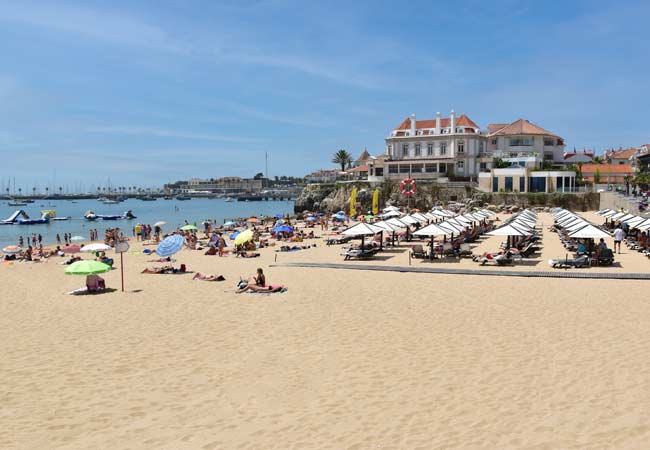
The Praia da Conceição beach
Casa de Santa María
The Casa de Santa María is an enchanting Mediterranean villa based around authentic Portuguese architecture. Built in 1902 as Jorge O'Neil's wedding gift to his daughter, the house deliberately rejected the French-inspired opulence popular among Portugal's elite. Instead, architect Raul Lino championed the "Casa Portuguesa" movement, using only local stone and wood to create something timelessly Portuguese.
The result is a masterclass in regional design. Moorish-influenced horseshoe arches frame shaded verandas, while terracotta tiles crown the roof. Inside, cool cork panelling and 17th-century azulejo tiles create an authentically Mediterranean atmosphere. The house's position overlooking a rocky inlet adds to its romantic appeal.
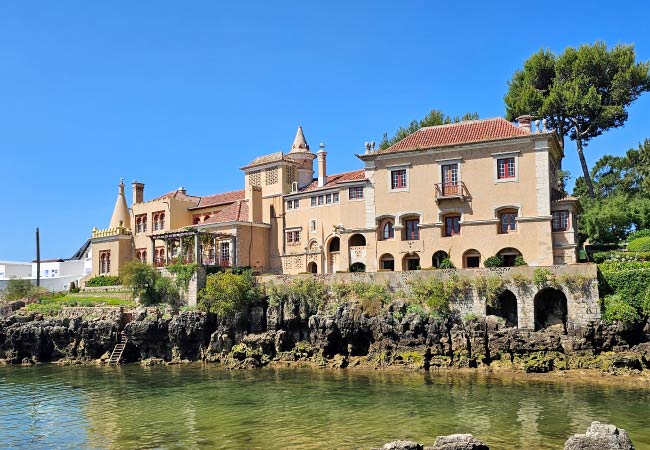
Farol de Santa Marta (Lighthouse Museum)
Cascais' most distinctive lighthouse breaks all the rules with its unusual square tower wrapped in iconic blue-and-white tiles. Built in 1868 atop the ruins of a 17th-century fort that once defended the Tejo Estuary, this quadrangular design makes it instantly recognisable along the Estoril coast.
The former fort buildings now house the excellent Farol Museu de Santa Marta, dedicated to Portugal's lighthouse heritage. Fascinating exhibits showcase magnificent Fresnel lenses and reveal the isolated lives of faroleiros (lighthouse keepers) who once tended these coastal beacons. Interactive displays explain the evolution of maritime navigation technology.
The museum's highlight is climbing the tower itself and rewards visitors with spectacular views over Cascais.
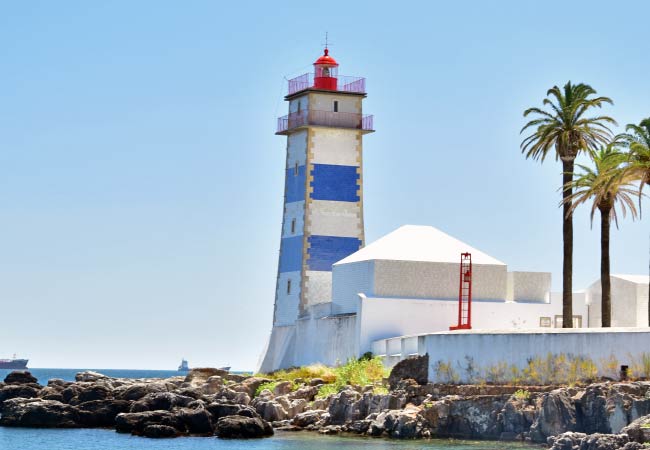
The Praia do Guincho and its cycle path
Praia do Guincho is a vast sandy beach that is exposed to strong prevailing winds and the huge waves of the Atlantic, making it ideal for surfing and kite surfing. Guincho beach is surrounded by the dramatic and unspoilt natural scenery of the Serra de Sintra, with its wind-swept hills and lush forests.
There is an 8km cycle path that connects Cascais to the Praia do Guincho. The path follows the rugged coastline and passes the Casa da Guia market, the Cabo Raso lighthouse and the Fortaleza do Guincho. As there are no hills along the route, hiring some bikes to cycle this path is an enjoyable half-day activity while on holiday to Cascais.
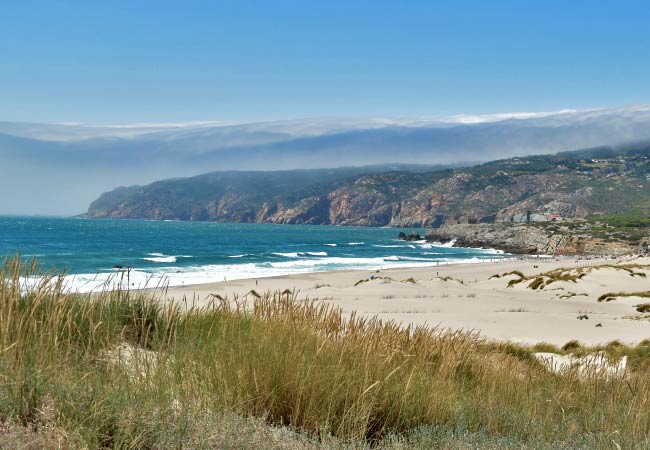
The Praia do Guincho with clouds covering the hills of the Serra de Sintra
Casa das Histórias Paula Rego
This striking museum stands out immediately with its twin pyramid towers and bold terracotta-red concrete, which cleverly echo Sintra's National Palace chimneys.
Inside, the museum houses the world's most comprehensive collection of Paula Rego's work (1935-2022). The Lisbon-born, London-based artist was renowned for her powerful visual storytelling that transformed Portuguese folk tales, nursery rhymes, and personal memories into unsettling, psychologically charged paintings. Her figures, often strong, defiant women, are rarely conventionally beautiful but always emotionally raw and compelling.
Rego fearlessly tackled themes of sexism, abuse, and political oppression. Her famous "Abortion Series" from the 1990s, depicting women after illegal procedures, is credited with influencing Portugal's eventual legalisation of abortion in 2007, testament to her art's real-world impact. The museum's rotating displays cover her entire career, from early drawings to large-scale pastels and the three-dimensional tableaux she built as models.

The bold design of the Casa das Histórias Paula Rego, with the two towers that represent the National Palace in Sintra
Parque Marechal Carmona
This enchanting park offers instant tranquillity just steps from Cascais's bustling centre. Combining the former gardens of two grand estates, including the Condes de Castro Guimarães palace grounds, it's become a beloved green sanctuary for locals and visitors alike.
Shady paths wind beneath towering pines, eucalyptus and palms, leading to unexpected delights. The park's famous free-roaming residents include strutting peacocks, colourful cockerels, and ducks patrolling the grounds. A central pond hosts geese and sunbathing terrapins, while a small petting zoo with goats and rabbits delights children.
The Ribeira dos Mochos stream flows gently through the grounds, crossed by quaint bridges. Discover a fragrant rose garden (spectacular in late spring), the whitewashed 16th-century Capela de São Sebastião, and ample lawns perfect for picnicking. A café-kiosk provides refreshments, while a children's playground and public library add to the family-friendly atmosphere.

The Capela de São Sebastião in the Parque Marechal Carmona
The Cidadela de Cascais
The massive star-shaped fortress looms over Cascais and was built between 1590 and 1640 to defend the entrance to Lisbon. The fort exemplifies the revolutionary "trace italienne" design with pointed bastions creating interlocking fields of fire that eliminated defensive blind spots.
The fortress's transformation from military stronghold to cultural hub mirrors Cascais's own evolution. In 1870, King Luís I converted the governor's residence into a royal summer palace, establishing the town as Portugal's premier resort and earning it the "Portuguese Riviera" title. The royal family summered here until the monarchy's end in 1910.
Today the Cidadela seamlessly blends historic preservation with contemporary luxury. Part of the complex operates as the 5-star Pestana Cidadela hotel. More accessible is the Cidadela Art District, these public courtyards house independent galleries, artist studios, design shops, and upscale restaurants. Visitors can freely explore these atmospheric spaces, discovering contemporary art installations set against 400-year-old fortifications.
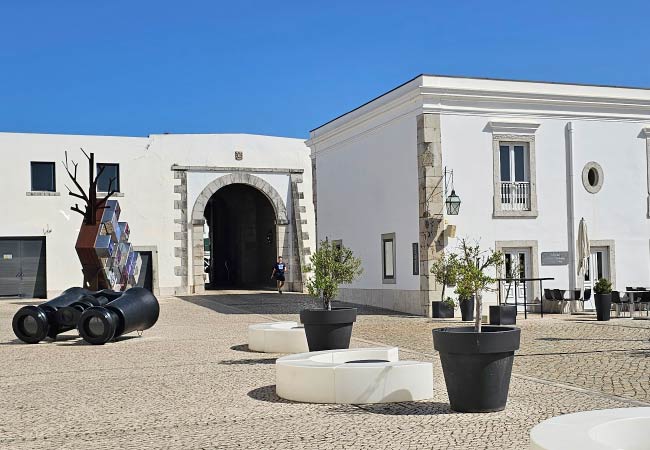
Museu do Mar Rei Dom Carlos I
This small but informative museum details thThis often-overlooked museum brilliantly weaves together Cascais's dual maritime identity: its ancient fishing traditions and its role as a pioneering centre for oceanographic science.
The museum takes its name from King Carlos I, who was far more than just royalty – he was a respected scientist who conducted 12 oceanographic expeditions from Cascais between 1896 and 1907. Aboard his yachts (all named Amélia), the king personally collected deep-sea specimens and developed new research techniques, earning international recognition for his contributions to marine science.
The collection divides into two complementary sections. One chronicles the harsh realities of traditional fishing life through beautifully crafted scale models of colourful fishing boats, displays of nets and nautical instruments, and photographs capturing the precarious existence of Cascais fishermen. The other shows King Carlos's scientific legacy with preserved deep-ocean specimens, expedition artefacts, and early oceanographic equipment.
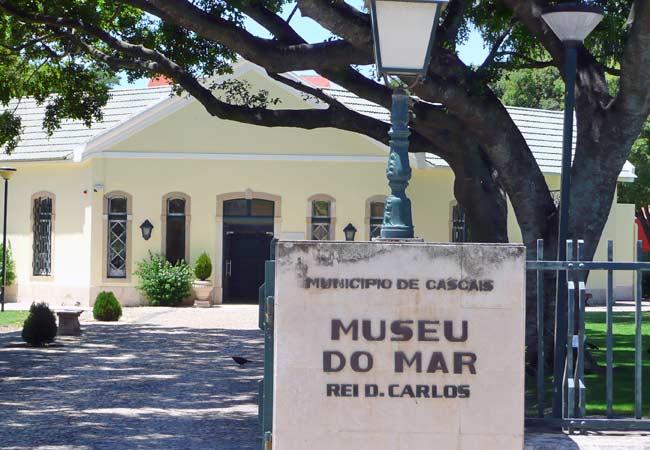
The Sea Museum is housed in the king's former private residence
The Mercado da Vila
The Mercado da Vila is the traditional covered market of Cascais, offering a range of stalls selling freshly caught fish, local produce and handicrafts. Within the market are a beautiful set of Azulejos tile paintings that depict the history and heritage of Cascais.
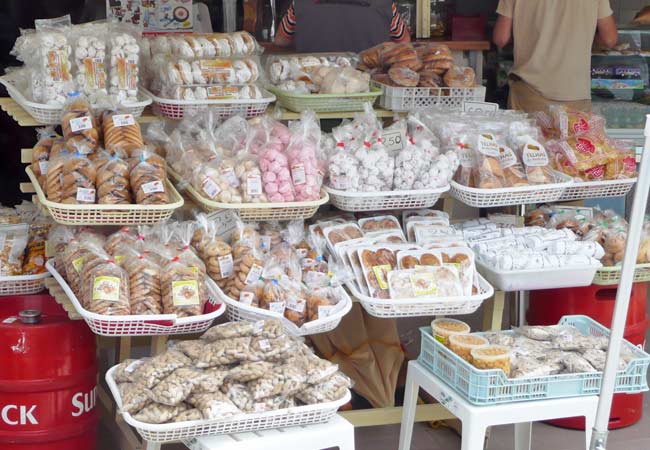
Local sweets, cakes and pastries for sale in the market
Casa da Guia
The Casa da Guia is a trendy shopping complex and dining area, which is situated in the grounds of a grand 19th-century house. The shops and stalls offer high-end designer gifts, while the restaurants provide stunning views over the ocean.
Praia da Ursa (15km drive from Cascais)
The Praia da Ursa is the most stunning of the beaches of the Serra de Sintra coastline, and the location to escape the tourist masses.
This remote beach sits at the base of a steep cliff, and is reached via dirt tracks and a footpath that scrambles down the side of the collapsed cliff. The Praia da Ursa is distinctive for its two huge rocky outcrops; sections of harder cliffs which have withstood the power of the Atlantic Ocean. These rocky islands give the beach its name as the ‘Rocha da Ursa’ supposedly looks like a bear (ursa in Portuguese)
Insight: There is a very scenic 1.7km coastal path from the Cabo da Roca to the Praia da Ursa, and this path is the suggestion to extend a visit to the Cabo da Roca.

The Praia da Ursa as seen from the coastal footpath to the Cabo da Roca
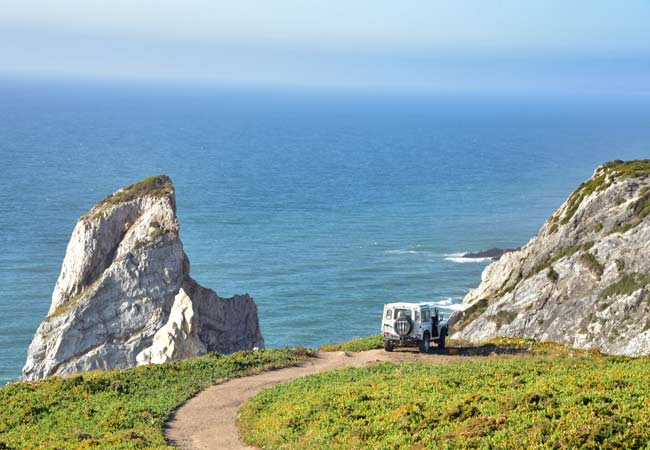
There are better locations to parking than this…
The Oeiras Coastal Promenade
The Oeiras Coastal Promenade is a 4km paved pathway that connects the towns of Oeiras and Paço de Arcos. The promenade is lined with sandy beaches, cafes and parks. It is a fantastic location for walking, jogging or cycling.
The promenade starts at the Praia da Torre and extends to Paço de Arcos, passing the Praia de Santo Amaro. There is a regular train service that connects Cascais to Oeiras and Paço de Arcos.
The Oitavos Dunes Golf Course
The Oitavos Dunes Golf Course is considered one of the best golf courses in Portugal and is situated in a beautiful natural setting amidst the sand dunes of the Serra de Sintra Natural Park.
This world-class golf course was designed by Arthur Hills and has hosted the Portuguese Open on several occasions.
The Estoril Casino
The Estoril Casino is one of the largest casinos in Europe and has long been a popular destination for the rich and famous. The casino offers a wide variety of traditional gambling games, such as roulette, blackjack and poker, as well as thousands of slot machines. The casino also hosts theatre performances and live music. During World War II, the Estoril Casino was a hive of spies, exiles and adventurers, and it is said that Ian Fleming drew inspiration from the casino for his James Bond character.
If you've found our content valuable, we'd welcome your support.
The digital publishing landscape has evolved significantly. As a small independent publisher, we face growing challenges. Search engines increasingly favour paid content over organic results, while AI-generated content often reproduces original work without attribution.
To support our work, please consider bookmarking this page (press Ctrl + D) for quick access. If you find an article helpful, we'd be grateful if you'd share it with friends on social media.
For specific questions, please see our Reddit community at r/LisbonPortugalTravel.
Should you notice any outdated or incorrect information, please contact us at [email protected]
Thank you for helping us continue to provide valuable content in an increasingly challenging digital environment.


























